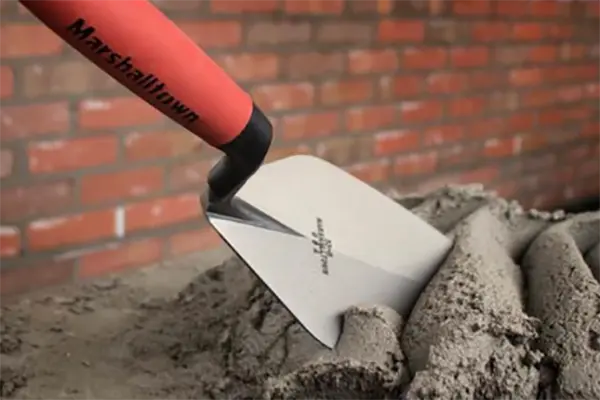In the world of masonry, the brick trowel stands as an essential tool, enabling skilled craftsmen to lay bricks and mortar with precision and finesse. This seemingly simple yet indispensable tool has evolved over time, incorporating various materials and features to enhance its functionality and durability. In this article, we will delve into the materials and features of the masonry brick trowel, exploring how these elements contribute to its effectiveness in the art of bricklaying.
The Role of Materials in the Masonry Brick Trowel
The choice of materials in the construction of a brick trowel significantly impacts its performance and longevity. Let’s examine some commonly used materials and their characteristics:
- Steel Blade: The blade, also known as the “pointing trowel,” is the working end of the masonry brick trowel. Steel is a popular material for blades due to its exceptional strength and resistance to wear. High-quality stainless steel blades are favored for their durability and ability to maintain a sharp edge, allowing for precise brick placement and mortar application. The smooth surface of a steel blade also facilitates easy cleanup after use.
- Wooden Handle: The handle of a masonry brick trowel is typically made of wood, such as beech or ash. Wood offers a comfortable grip and helps absorb shock during bricklaying, reducing fatigue on the mason’s hand and wrist. Additionally, wood is known for its excellent insulation properties, making it an ideal choice for handling the tool in both hot and cold weather conditions. Properly finished and treated wooden handles can withstand the rigors of masonry work and provide a reliable grip for extended periods.
- Rubberized Handle Grip: Some modern brick trowels feature handles with rubberized grips. The rubber coating enhances the ergonomic design, providing a non-slip surface that offers additional comfort and control during bricklaying tasks. The rubberized handle grip reduces the chances of the trowel slipping from the mason’s hand, ensuring greater precision and safety.
Key Features of the Masonry Brick Trowel
The masonry brick trowel possesses several features designed to improve its functionality and efficiency. Let’s explore some of these features:
- Blade Shape and Size: The blade of a brick trowel typically has a pointed shape, allowing precise maneuverability when working with bricks and mortar. The size of the blade can vary, ranging from narrow for intricate work to wider for larger wall sections. The blade’s curvature and flexibility help scoop and spread mortar evenly, ensuring proper adhesion and alignment of bricks.
- Durasoft or Cushioned Handle: Some brick trowels incorporate a durasoft or cushioned handle design. This feature provides additional comfort during extended periods of use, reducing strain on the mason’s hand. The cushioned handle absorbs vibrations, minimizing the impact on the user’s joints and enhancing overall control and accuracy.
- Finger Guard: Some brick trowels have a finger guard integrated into the design. This protective feature prevents accidental contact between the mason’s fingers and the blade, reducing the risk of injuries. The finger guard also enhances grip stability, allowing for precise movements and minimizing the chances of slippage.
Benefits of the Masonry Brick Trowel
The masonry brick trowel offers numerous benefits that contribute to its indispensability in the field of bricklaying:
- Precision and Accuracy: The brick trowel’s design and features enable masons to achieve precise brick alignment and mortar application. The pointed blade and ergonomic handle provide the necessary control and maneuverability to create neat and professional-looking masonry work.
- Efficiency and Productivity: By facilitating efficient mortar application and brick laying, the brick trowel helps masons work faster and more productively. The smooth steel blade and comfortable grip reduce fatigue, allowing craftsmen to focus on their work without unnecessary strain.
- Durability and Longevity: High-quality materials and construction ensure that a well-maintained brick trowel can withstand the demands of masonry work for a long time. The durability of the steel blade and the resilience of the wooden or rubberized handle contribute to the tool’s longevity, making it a reliable investment for masons.
Conclusion
The masonry brick trowel is an essential tool for skilled craftsmen, enabling them to create sturdy and aesthetically pleasing brick structures. The choice of materials, such as steel for the blade and wood or rubber for the handle, plays a crucial role in the trowel’s performance and durability. Features like blade shape, handle design, and protective elements enhance the trowel’s functionality, providing precision, comfort, and safety. With its ability to deliver precision, efficiency, and durability, the masonry brick trowel remains an indispensable companion in the hands of skilled bricklayers
Post time: Mar-29-2024







